
Top 10 Rare Superfoods To Boost Well-Being
Looking to take your healthy diet and lifestyle to the next level? Superfoods are packed with nutrients, vitamins, and minerals, and can help make an already healthy routine even better. Keep reading for an overview of some of the best and rarest superfoods on the planet.
Superfoods get a ton of media attention, with manufacturers and retailers often making huge claims about their potential to boost your health and even cure disease. And while these claims are often exaggerated, that doesn't mean there's no truth to them at all. Many superfoods can serve as a great addition to an already healthy diet and lifestyle routine. In this article, we'll shed light on some of the world's best nutrient-dense superfoods.
What are superfoods?
The term "superfood" is a buzzword used to describe foods or supplements with a high nutritional content or supposed health benefits. While there are no strict legal definitions of what constitutes a superfood, superfoods are typically:
- Natural
- Plant-based
- Rich in vitamins, minerals, and antioxidants
- Rich in core nutrients such as protein and fibre
- Low in calories
Note that superfoods are far from a cure-all; they can't stave off disease or health problems on their own, and a lot more research is needed to really evaluate the health impact of various superfoods. They do, however, make a great addition to an already healthy lifestyle and diet.
Top 10 rare superfoods
Want to explore the magical world of superfoods? Below you'll find 10 examples of rare superfoods from all corners of the globe.
1. Baobab powder
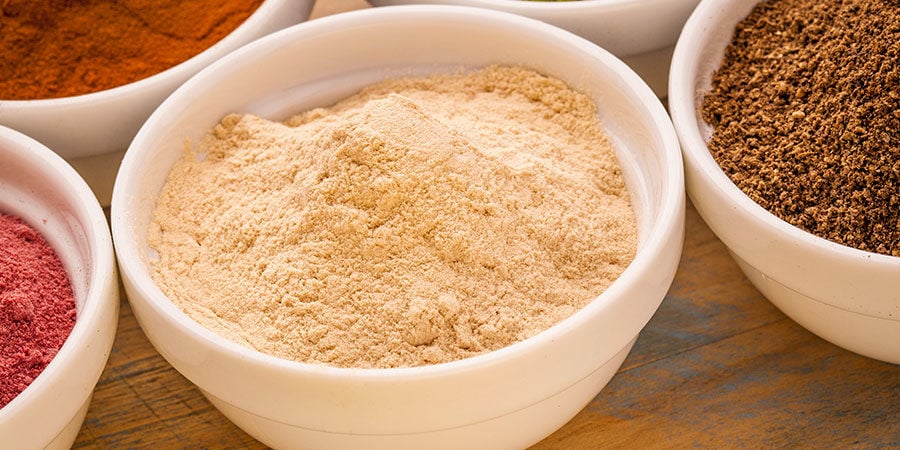
Also known as the monkey fruit tree (because, you guessed it, monkeys love its fruit), the baobab is a species of tree native to Madagascar, the African Mainland, and Australia. A long-lived tree, baobabs produce large flowers that are reproductive for only 15 hours. Once pollinated, the flowers produce a large, ovalish, and berry-like fruit with tan-coloured, kidney-shaped seeds. Both the fruit's pulp and seeds are highly regarded as some of the most nutrient-dense foods on the planet, packed with unrefined carbohydrates and fibre, as well as a plethora of vitamins and minerals. Baobab contains roughly 5 times more vitamin C than oranges, for example, as well as micronutrients like thiamin, calcium, iron, and more. Baobab powder is made using 100% natural baobab fruit pulp, which has a natural citrus flavour that goes well in smoothies, juices, yoghurts, desserts, and fruit salads.
2. Goji berries
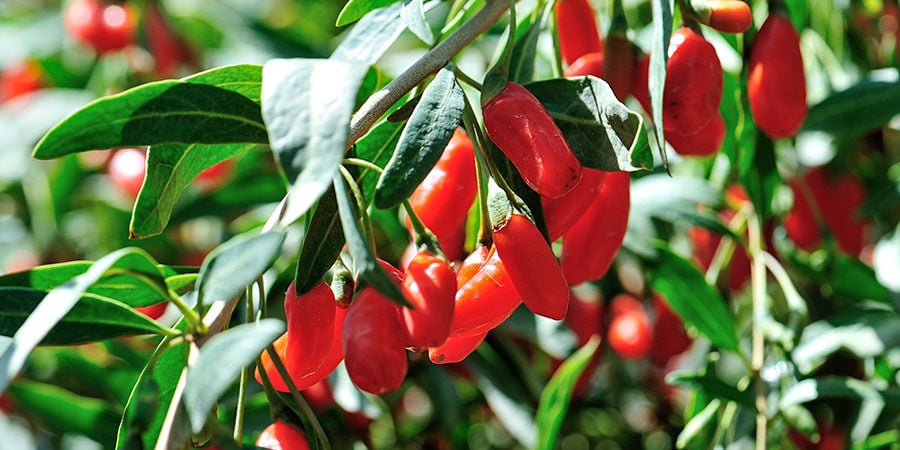
Don't let their small size fool you—goji berries pack a lot of nutritional power, which is why they've long played a central role in traditional Asian nutrition and holistic practice. Goji berries are derived from Lycium barbarum, a shrub native to China but now found throughout Asia. Dried berries have a chewy texture and a sweet and sour flavour that goes great in sweet and savoury dishes—from granola right through to curries and cakes. Goji powder has a similar flavour, and it makes a great addition to smoothies and juices as a supplement. Goji berries get their renown from their wide array of nutrients, vitamins, minerals, and antioxidants. A tablespoon of berries, for example, contains high amounts of fibre, vitamin A, vitamin C, and iron, making them a great addition to any well-balanced diet. Note that goji berries are also naturally rich in sugar.
3. Moringa
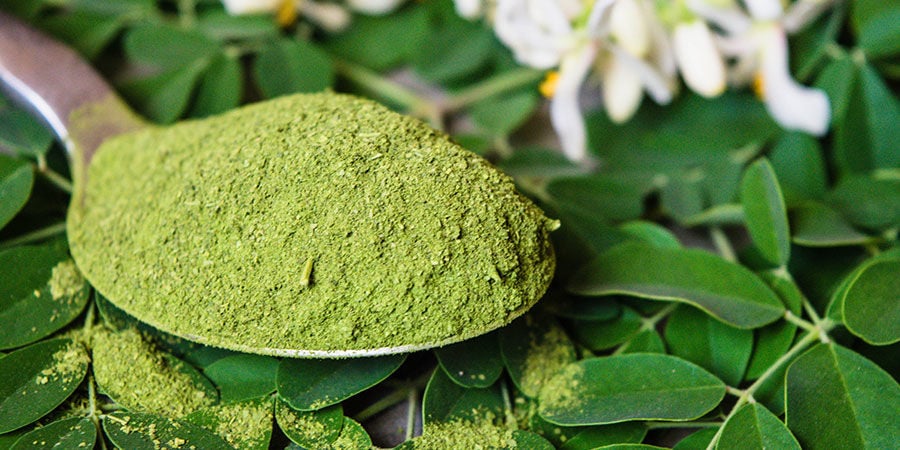
Moringa oleifera is a tree native to the Indian subcontinent, though it also grows in the Himalayas and Africa. It reaches up to 12m tall with a medium-sized stem, thin branches, and bright green, feather-like leaves. It also produces fragrant, yellowish-white flowers and long seed pods. Throughout India and neighbouring regions, Moringa is commonly used in local cuisine and is highly regarded for being very nutritious. Its leaves are the most nutritious part of the plant, packing high concentrations of vitamins A, B, C, and K, manganese, protein, and calcium. Moringa is also considered a great natural source of iron and magnesium, as well as amino acids. The plant's seeds, seed pods, flowers, and roots are also edible and enjoyed in many parts of the world, though they contain fewer nutrients. Moringa powder is made from dried and crushed moringa leaves and can be taken with water or added to juices and smoothies.
4. Turmeric
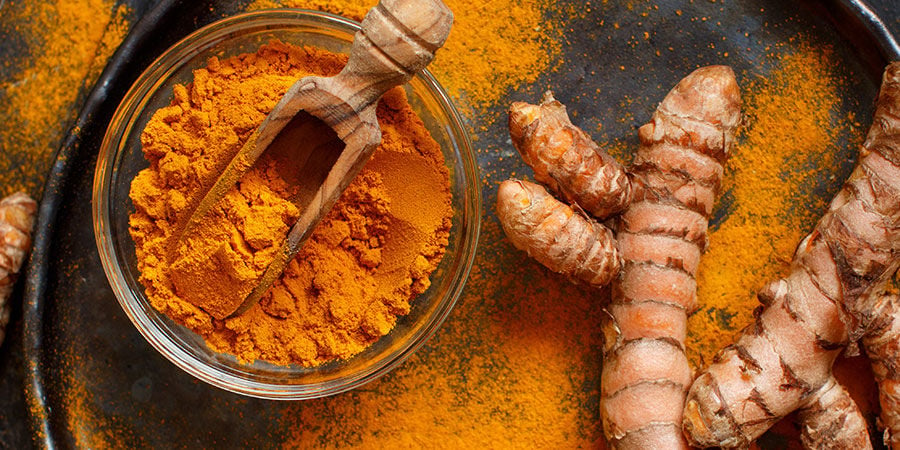
Turmeric does much more than just add vibrant colour to curry—it's an ancient component of Ayurvedic, siddha, and Chinese naturopathic practice. This colourful spice is derived from Curcuma longa, a close relative to ginger, which grows throughout India and other parts of Asia. In recent years, turmeric has gained attention in the West for its plethora of potential effects on wellness. The main component believed to give turmeric its effects is curcumin (which is also responsible for the spice's intense yellow colour). While it only makes up 1–6% of turmeric, a growing body of research shows that curcumin is a powerful antioxidant. Unfortunately, curcumin has poor bioavailability, which is why it is best taken in higher concentrations as a supplement rather than a spice. It is also important to take turmeric together with black pepper (which contains piperine) to boost its bioavailability.
5. Acai berries
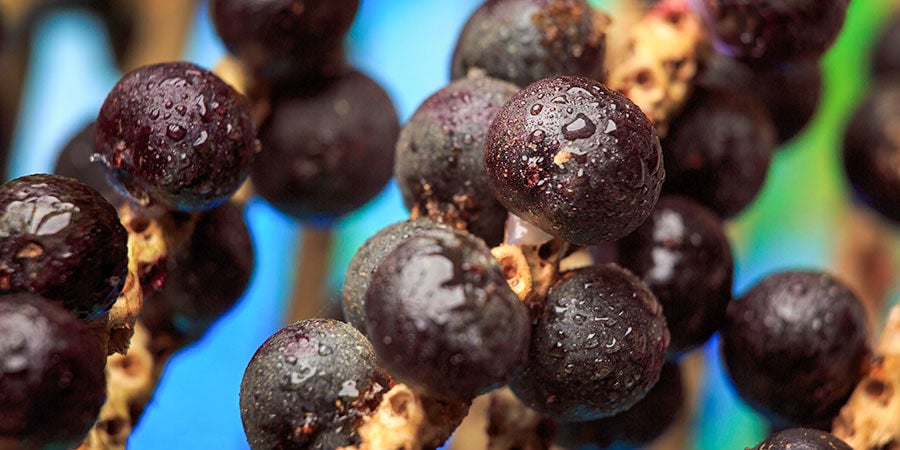
Acai berries are derived from the acai palm, which grows natively in swamps and flood lands in the Brazilian Amazonas. It produces grape-like drupes that have won the title of "superfruit" due to their high nutrient density. Acai berries have long served as a staple food source for indigenous people of the Amazonas, delivering healthy fats, carbs, and fibre, as well as a variety of minerals. Today, acai berries continue to accompany meals in the Amazon, usually in the form of a dark purple paste. While acai berries have been poorly marketed in the past using false claims and testimonials, they still make a good addition to a healthy diet/lifestyle. Acai powder is usually made from fruit puree that is freeze-dried to form a dark purple powder that can be used in fruit salads, smoothies, juices, yoghurts, and desserts.
6. Hemp seeds
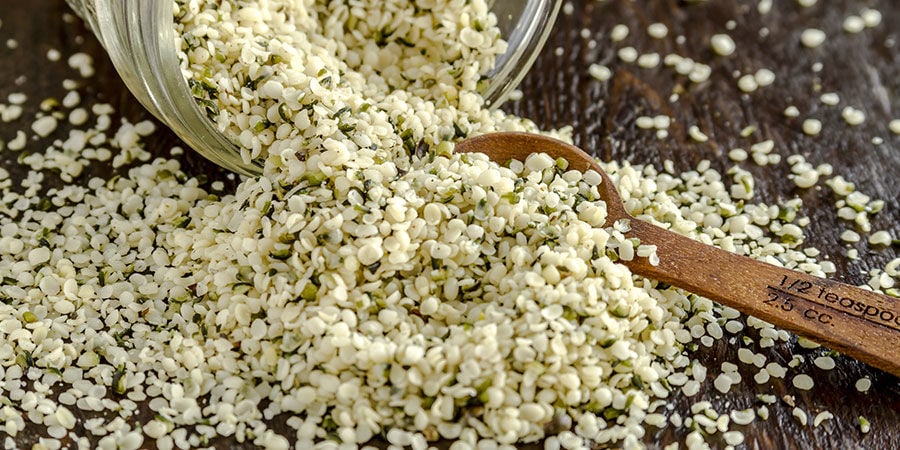
Hemp is one of the fastest-growing plants on the planet and was likely one of mankind's first crops. It has also been used in traditional Chinese holistic practice for over 3,000 years. Besides producing psychoactive flowers and fibrous stems, hemp plants (Cannabis sativa) also produce super-nutritious seeds in very large quantities—a single cannabis plant can produce thousands of seeds, depending on its size. Technically a nut, hemp seeds make a great addition to an already established diet. They pack over 30% fat and are particularly rich in omega-3 and omega-6. Hemp seeds are also considered an excellent source of high-quality protein, outperforming both chia and flax seeds. Moreover, hemp seeds are a great source of vitamin E, phosphorus, potassium, sodium, magnesium, sulphur, calcium, iron, and zinc. They can be eaten raw to preserve most of their nutrients or added to cooked foods. Hemp seeds make a great addition to granola bowls and bars, muesli, yoghurt, salads, and curries. Some people also add hemp seeds to quinoa, tabouleh, and more!
7. Goldenberries
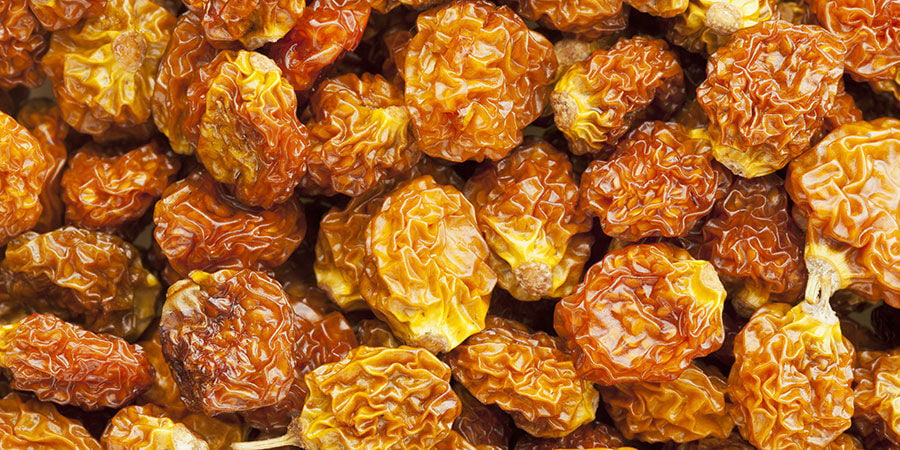
Goldenberries (also known as Inca berries, Peruvian groundcherry, or cape gooseberries) are another superfood stemming from the Americas. Only slightly smaller than cherry tomatoes, goldenberries form inside a fine papery husk on the Physalis peruviana plant—a member of the nightshade family. The use of these berries dates back to the Incan empire, though they have also been cultivated in England, South Africa, and throughout the Pacific. Producing smooth, round, and golden fruits that look just like yellow tomatoes, goldenberries make a delicious snack on their own, as well as a great addition to a variety of sweet and savoury dishes. 100g of dried goldenberries contains just 280 calories, 15% fibre, 65% unrefined carbohydrates, and 7% protein. Goldenberries are also a great source of vitamin A, vitamin B1, vitamin B2, and vitamin B3.
8. Amaranth
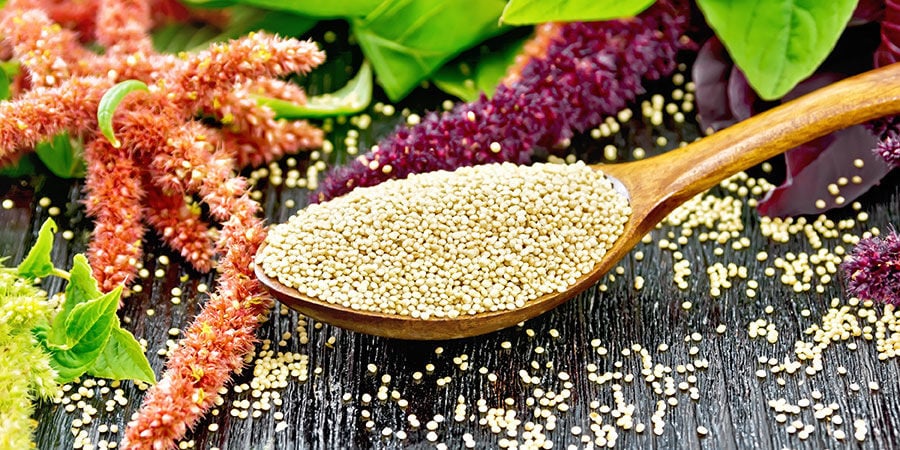
Amaranth is a delicious and healthy grain discovered in the New World, where it served as a staple food for Incan, Mayan, and Aztec civilizations. It technically comprises over 60 different grain species that have been cultivated and used as food sources for thousands of years. The grains come from a genus known as Amaranthus, which served as a principal food source for the Aztecs. Today, amaranth is still used in Mexican cuisine, as well as other cuisines from all over the world, including India, Indonesia, the Philippines, and Greece. It is highly regarded for being very nutritionally dense; amaranth consists of up to 58% unrefined carbs, 14% non-animal protein, 7% fibre, and 7% fat. Amaranth also contains a wide variety of vitamins, including B1, B2, B2, B3, and B5, C, and E. Moreover, it is also an excellent source of minerals, including manganese, phosphorus, magnesium, iron, and calcium.
9. Spirulina
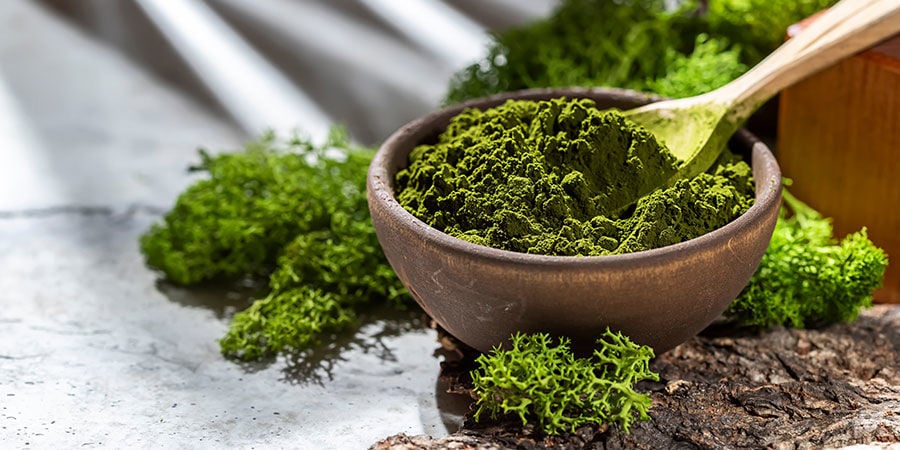
Spirulina is one of the world's most popular supplements, and for good reason. Derived from three species of green algae, spirulina also served as a food source for the Aztecs and other ancient American cultures (similar to amaranth and goldenberries). However, it is also consumed in other parts of the world, including Africa. For several years, spirulina has dominated the health food and supplements market, thanks to its high concentration of nutrients. Spirulina is made up of over 50% high-quality protein and is rich in all essential amino acids. It also contains some mono and polyunsaturated fats, as well as a good amount of unrefined carbohydrates. Moreover, spirulina is a great source of iron, manganese, and magnesium, as well as a variety of vitamins, including B1–3, B5 & B6, B12, as well as vitamins C, E, and K. Note that there are some safety concerns regarding spirulina being contaminated with bacteria that produce microcystins—a type of toxin that can cause a variety of unpleasant side effects. Hence, it is always important to source high-quality spirulina from a trusted brand/manufacturer.
10. Camu camu
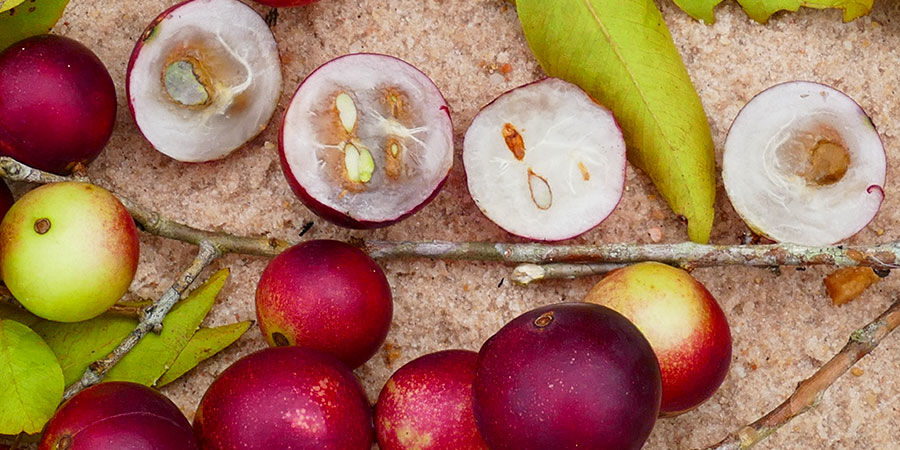
Camu camu, or Myrciaria dubia, is a small, bushy tree that grows along rivers in the Peruvian, Bolivian, Colombian, Ecuadorian, and Brazilian Amazon. The tree produces small, sour fruits that resemble a hybrid between cherries and plums. Packed with nutrients and low in calories, camu camu has become ever more popular among the rest of the world, though the fruit's tart flavour makes it somewhat unpalatable. Hence, most camu camu supplements come in a powdered form that can be added to smoothies, juices, yoghurt, or other foods to mask the taste. Camu camu is held in high regard for containing high amounts of vitamin C, though it also contains a variety of minerals.
Try these superfoods today
There you have it; a collection of some of our favourite superfoods from all over the world—many of which you can buy from the Zamnesia Healthshop. If you're looking for new ways to improve your nutrient uptake and overall well-being, make sure to check out the foods mentioned here. Just remember that superfoods are no cure-all, and should only be used as add-ons to an already healthy diet and lifestyle.
-
 4 min
14 April 2023
Triphala: What You Need To Know
When we look back at ancient medicines and natural remedies, some have stood the test of time, whereas others have not. One herbal concoction that's steeped in a rich history is Triphala. But does...
4 min
14 April 2023
Triphala: What You Need To Know
When we look back at ancient medicines and natural remedies, some have stood the test of time, whereas others have not. One herbal concoction that's steeped in a rich history is Triphala. But does...
-
 2 min
27 March 2023
Moringa: Everything You Need To Know
Moringa has been used for thousands of years, but does it have a place in the modern world? Available in various forms, from capsules to powdered extracts and dried leaves, discover everything this...
2 min
27 March 2023
Moringa: Everything You Need To Know
Moringa has been used for thousands of years, but does it have a place in the modern world? Available in various forms, from capsules to powdered extracts and dried leaves, discover everything this...
-
 4 min
27 January 2023
Cordyceps: What You Need To Know
With the rise of The Last of Us, cordyceps has never been more popular. But what exactly are these zombie fungi? Do they really cause disturbing effects? Fortunately for humans, not. But they do...
4 min
27 January 2023
Cordyceps: What You Need To Know
With the rise of The Last of Us, cordyceps has never been more popular. But what exactly are these zombie fungi? Do they really cause disturbing effects? Fortunately for humans, not. But they do...
-
 6 min
2 July 2021
What Is Chaga Mushroom?
Chaga mushroom has long played a central role in traditional and natural holistic practices. But what effects does it have, how is it prepared, and is it safe? Keep reading to find out.
6 min
2 July 2021
What Is Chaga Mushroom?
Chaga mushroom has long played a central role in traditional and natural holistic practices. But what effects does it have, how is it prepared, and is it safe? Keep reading to find out.





 United States
United States











